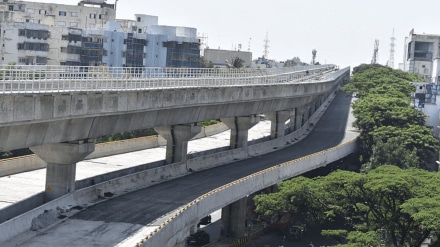After several months of uncertainty, Phase 3 of Namma Metro is finally progressing towards implementation. The Bangalore Metro Rail Corporation Limited (BMRCL) has announced that it will soon invite tenders for the construction of the 28.4-kilometre corridor connecting JP Nagar 4th Phase to Kempapura in Hebbal, according to Bangalore Mirror.
Tender plans after months of delay
Although the Central Government approved this stretch almost a year ago, tendering was repeatedly postponed — leading to widespread frustration among citizens. Officials clarified that the delay stemmed from the project’s complex double-decker viaduct design, which integrates both a metro track and a flyover into one structure. With the detailed design now finalised, BMRCL is preparing to launch the construction phase, according to a report by Bangalore Mirror.
The entire project will be divided into ten construction packages, each covering viaducts, stations, and depots. The line will traverse several key localities including JP Nagar, Kamakya, Kadirenahalli, Hosakerehalli, KHB Colony, Kamakshipalya, Mysuru Road, Nagarabhavi Circle, Sumanahalli Cross, Nagashettihalli, and Kempapura. It will feature 30 stations, including seven interchange points linking existing and upcoming metro corridors.
India’s first double-decker metro structure
The defining feature of Phase 3 is the creation of India’s first double-decker integrated metro corridor, spanning a total of 37.12 kilometres. This includes the 28.4-km JP Nagar–Kempapura route and an additional 8.6-km elevated section from Hosahalli (Magadi Road) to Kadabagere. The ₹9,700 crore project received approval from the State Cabinet in September.
Funding responsibilities will be shared among multiple stakeholders: the State Government will cover 50%, the Centre will contribute 10%, and the remaining 40% will be financed through external loans.
The total estimated cost of Phase 3 stands at ₹15,611 crore. To put this in perspective, Phase 1 (42 km) rose from ₹6,395 crore to ₹14,133 crore, while Phase 2 (72 km) expanded from ₹26,405 crore to ₹40,614 crore. The Japan International Cooperation Agency (JICA) has sanctioned a ₹7,577 crore loan for Phase 3, including funding for rolling stock procurement.
Timeline extended to 2031
Initially, BMRCL aimed to launch operations for this corridor by 2029, but with repeated planning and tendering delays, completion is now expected around 2031.
Currently, Bengaluru Metro operates across 97 kilometres, carrying nearly 10 lakh passengers daily — making it India’s second-largest metro system after Delhi. Delhi Metro leads with 394 kilometres of network and over 65 lakh commuters per day, followed by Mumbai (82.2 km), Kolkata (74 km), Hyderabad (62.7 km), and Ahmedabad (54 km).
The upcoming Phase 3A (Blue Line) will connect Sarjapur to Hebbal, extending 36.59 kilometres — with 14.45 km underground and 22.14 km elevated sections. Featuring 28 stations (11 underground and 17 elevated), it is expected to reduce congestion on major city roads and enhance access between residential areas and IT hubs.
Although Bengaluru Metro fares remain higher than in other cities — with a 30 km ride costing around ₹90 — commuters continue to depend on it for its speed, comfort, and reliability.
As BMRCL prepares to invite tenders, Phase 3 represents a crucial step forward in Bengaluru’s quest for an efficient, interconnected public transport system, reaffirming the city’s position as one of India’s fastest-evolving metro networks.
